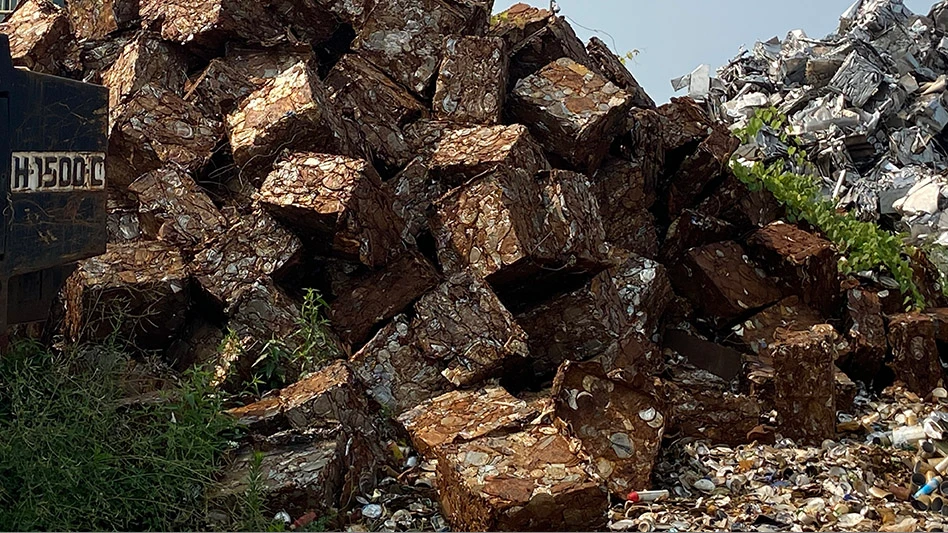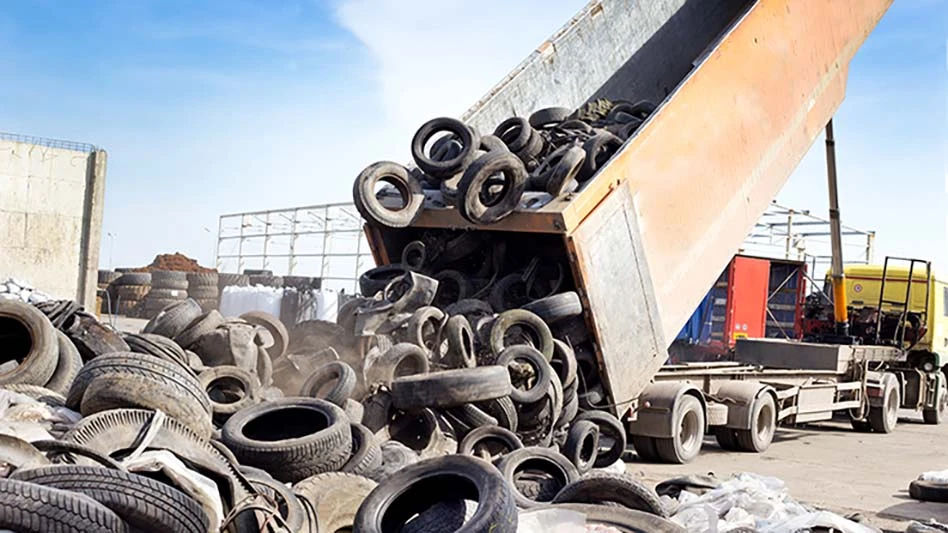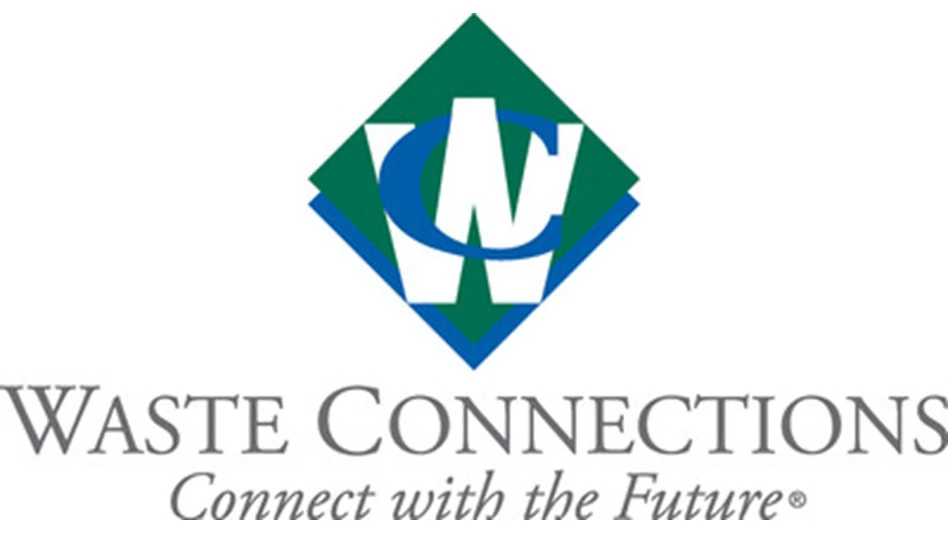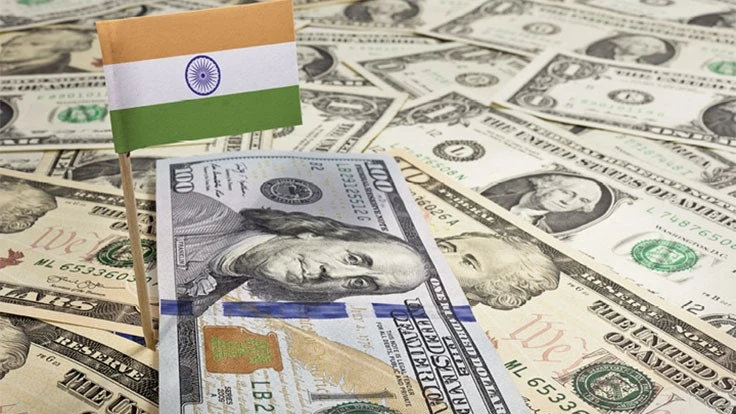

“The good thing about the China problem is that it did not happen overnight,” says Sunil Bagaria, president of GDB International, New Brunswick, New Jersey. “Progressively, they implemented a series of steps. That was enough for anybody to understand the China problem is a permanent problem.”
With that door closing to some U.S. scrap imports, others have opened. India serves as one of the growing countries for U.S. recyclers looking for export markets, specifically for nonferrous and paper scrap.
Dhawal Shah, director at Metco Marketing Pvt. Ltd., based in Mumbai, says India’s consumption of scrap has grown in recent years.
“The overall volumes that we have from last year, imports as well as domestic sources, [went] up,” Shah says. “After China put controls on their policy, I reckon
Shah says India is currently the fastest growing major economy in the world, expanding at a rate of 7.5 percent. Therefore, the volume of scrap the country generates and consumes has the potential to grow in the next few years. He adds, “Of course, China may remain the dominating force; however, India is making its own growth story. If [China] slows down their buying, India becomes the natural choice for American companies to plan to sell scrap.”
Need for nonferrous
Demand for ferrous scrap has remained steady in India, and demand for nonferrous scrap has increased. Sanjay Mehta, director at MTC Business Pvt. Ltd., Mumbai, and president of the Material Recycling Association of India (MRAI), also based in Mumbai, says he has noticed a great deal of new nonferrous activity in India.
“Nonferrous scrap metal imports have increased in the past 10 years,” he says. “In nonferrous, the quantity has gone up. There are more buyers of that kind of scrap since China’s not [been] in the market” from the last seven to eight months.
Ferrous scrap, on the other hand, faces more international competition. Mehta adds, “In the ferrous market, there are other competitors [for scrap], like Bangladesh, Pakistan or Indonesia.”
Shah says India is the second biggest steel producer in the world, with ferrous scrap being used to produce more than 50 percent of its total steel output.
“The secondary nonferrous sector is also growing at about 10 percent year over year,” he says.
Shah says aluminum is the largest nonferrous scrap import to India, followed by lead, brass
Mehta says India imports about 85 percent of the aluminum scrap and about 70 percent of the brass scrap it needs.
In recent years, Mehta says India has seen new activity with heavies and
“With nonferrous, we’re largely dependent on the international market—maybe 70 percent dependency,” he says. “For ferrous, it’s hardly 10 to 15 percent of overall total secondary sector production of steel,” he says of scrap imports.
“In the years to come, the recycling industry needs a major shift—a seismic shift—in the way that we take care of our scrap.” – Sunil Bagaria, GDB International
Looking to 2019 and 2020, Shah says he thinks India will continue to steadily increase nonferrous scrap imports.
“China does play an important role,” Shah says. “If there’s a turn in terms of China relaxing its norms in due course, the scrap flows may get tweaked again. However, exporters now may look at investing
“There are a lot of potential events that we don’t know yet—only time will tell. But I think the secondary industry [for nonferrous] in India will continue to grow this year and next year,” he adds.
Paper and plastics
India also imported more recovered fiber in the past year. In fact, according to the Indian Paper Manufacturers Association, New Delhi, imports of paper and paperboard into India steadily increased over the last seven years at a compound annual growth rate (CAGR) of 16.11 percent in value terms and 18.15 percent in volume terms.
Dan Gee,
He adds that India is the biggest consumer of recovered fiber imports on this list of nations, but Gee says the country doesn’t consume anywhere near the amount of recovered fiber that China had consumed.
“The China import situation has really fast-forwarded development and growth in pretty unprecedented figures,” he says. “China is so big that it has consumed over the past 30 years about one-third of the world’s recovered paper.”
While in the near future India might not fill the hole for recovered paper that China left in the market, at the 2018 RISI International Recycled Fiber and Containerboard Conference in Shenzhen, China, Inder Aurora of Mumbai-based Tradecom International Pvt. Ltd. said he is hopeful India can “become the next China” over the next 20 to 30 years.
During the conference, Aurora said India produced about 17.5 million metric tons of paper and board in 2018, and it used recovered fiber to produce 65 percent of that volume. Of the 13.5 million metric tons of scrap paper consumed by India’s mills in 2018, 7.5 million metric tons (about 55.6 percent) were imported.
He said India’s import activity in 2018 increased because of a “price incentive” caused by the declining value of mixed paper and some old corrugated container (OCC) grades on the global market, prompted by China’s stricter standards for recovered fiber imports. He said, “The volumes of [exported] recovered paper to India will gradually keep going up as the optimal use of installed capacities and the restart of stalled capacities” gets underway.
Bagaria notes that “it’s a good thing” that India has stepped up to import some of the recovered fiber—specifically some of the lower quality fiber that had previously gone to China.
“Otherwise,” he adds, “a lot of this fiber would have ended up in a landfill in the U.S.”
While Bagaria says India could serve as a decent export market for recovered fiber grades, he says the country offers less opportunity for plastic scrap.
“In India, you can ship plastic scrap to very few companies,” he explains. “Only very clean grades can go to India.”
Bagaria says he thinks the best solution for plastic scrap generated in the U.S. is to recycle it domestically. “The only permanent solution is to encourage recycling domestically.”
Domestic recycling
Mehta estimates India achieved about a 30 percent recycling rate in recent years.
“Recycling activity in India is not organized yet in comparison with the international market,” he adds.
Yet, Mehta says he is hopeful India’s recycling rate will improve soon. Late last summer, MRAI discussed plans for a National Recycling Policy at the Sustainable Growth Through Recycling: Policy Prescriptions conference Aug. 6, 2018, in New Delhi.
“[While] several policies, acts
In an effort to understand best practices used in various segments of the global recycling industry, including country-specific legislation and rules, MRAI invited international experts and industry association leaders to share this information at its Sustainable Growth Through Recycling: Policy Prescriptions conference.
Mehta says MRAI has provided a great deal of input and suggestions to NITI Aayog (National Institution for Transforming India), the think-tank of India, which since has drafted a National Material Recycling Policy for the government of India. He says this policy has received some government support and it could be introduced before India’s general election in May 2019.
“We are sure that the government will introduce this before the election,” Mehta says. “We have all worked hard on this policy. The policy is India’s responsibility to recycle everything—paper, plastic, metal—and the ability to send that material to organized recyclers and separate it properly so it doesn’t go to landfills.”
Although India imports ferrous, nonferrous and paper scrap today, it might import less of these materials in the future if the country adopts a nationwide recycling policy.
Mehta says he is hopeful that, if adopted, the National Recycling Policy would help India to become self- sufficient and much less dependent on scrap imports in the future. “We are hoping in 10 years there will be minimized imports.”
In the long run, Bagaria says this policy—as well as any other recycling policies developed overseas—could be a good thing for recycling on a global level in general.
“In the years to come, the recycling industry needs a major shift—a seismic shift—in the way that we take care of our scrap,” he says. “It will not go as much overseas. We will have to wake up and find ways to use it domestically and recycle domestically. That’s the need of the hour.”
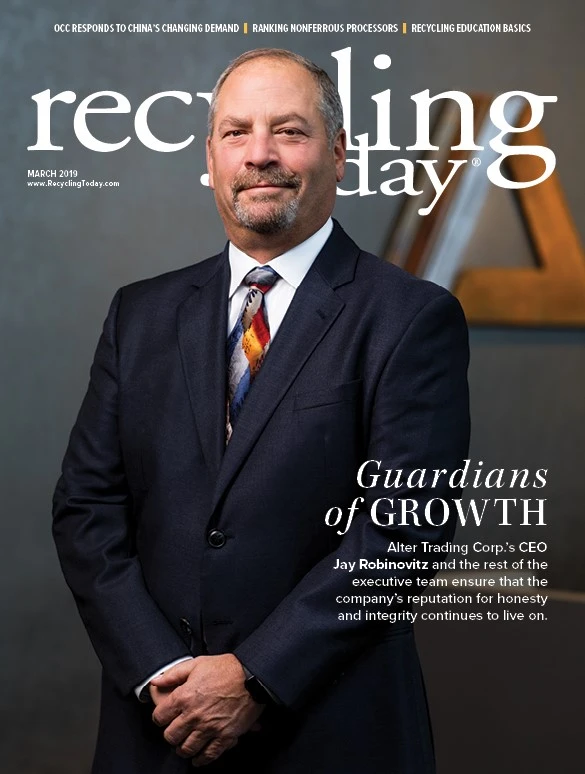
Explore the March 2019 Issue
Check out more from this issue and find your next story to read.
Latest from Recycling Today
- Lautenbach Recycling names business development manager
- Sebright Products partners with German waste management equipment company
- WasteExpo transitions to biennial format for enhanced experiences
- Study highlights progress, challenges in meeting PCR goals for packaging
- Washington legislature passes EPR bill
- PureCycle makes progress on use of PureFive resin in film trials
- New copper alloy achieves unprecedented high-temperature performance
- Gränges boosts profits and sales volume in Q1 2025

